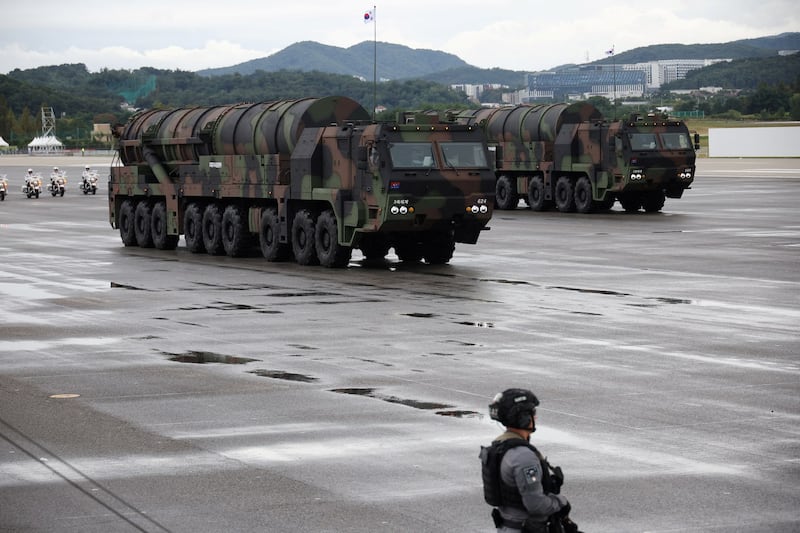TAIPEI, Taiwan – South Korea has completed the development of a homegrown Long-range Surface-to-Air Missile, or L-SAM, system, a move hailed by its president as a “significant breakthrough” in the country’s missile defence system to counter North Korean nuclear and missile threats.
The development comes amid heightened domestic security concerns over Pyongyang’s repeated missile launches and its growing military ties with Russia.
The L-SAM, designed to shoot down incoming targets at altitudes above 40 kilometers (25 miles), works in a multi-layered missile defense system, along with the U.S. Patriot Advanced Capability-3 and M-SAM II air defense systems that intercept targets at altitudes of 40 kilometers or below, according to the South’s defense ministry.
“Even if North Korea attempts a missile provocation, the North cannot penetrate our military’s sturdy defense system,” defense minister Kim Yong-hyun said in his congratulatory address during a ceremony marking the completion of the new system.
“It will have to pay the price – the end of its regime, which is bigger than what it gets through provocation,” Kim added.
South Korean President Yoon Seok Yeol called the development of the new system a “significant breakthrough” in the development of countering North Korean nuclear and missile threats.
South Korea is expected to begin production of the L-SAM next year and deploy it to the military during the mid-to-late 2020s.
North Korea has not commented at the time of this writing.
RELATED STORIES
North Korea doesn’t deny reports of troop deployment to Russia
North Korea to use all forces including nuclear if attacked: Kim Jong Un
South Korea unveils missile that can hit the North’s bunkers
In October, when South Korea showcased a domestically-produced ballistic missile, the Hyunmoo-5, the North reacted by calling the missile “worthless.”
Calling the showcasing of the missile as a “foolish act before the nuclear weapons state,” the North Korean leader’s powerful sister Kim Yo Jong said the South proved once again that they can “never cross the wall of inferiority in strength,” which is “the fate of a non-nuclear weapon state.”
“If it had not been opened to the public, the ‘mysterious ghost weapon’ would have been more effective in propaganda,” she said at that time.

Dubbed the “monster missile,” reflecting a destructive capacity that South Korean media said is comparable to that of a nuclear weapon, the Hyunmoo-5 can carry a warhead weighing up to 9 tons and is capable of striking deeply buried command centers.
The showcasing of the Hyunmoo-5 came amid growing concern in South Korea as North Korea had intensified its nuclear posturing with the first public disclosure of its uranium enrichment facility and a direct threat to hit the South with its nuclear weapons.
North Korea unveiled details of its uranium enrichment facility, a material commonly used to make nuclear weapons, for the first time in September. Its leader, Kim Jong Un, called to increase the number of centrifuges for uranium enrichment so it can increase its nuclear arsenal for self-defense.
Since then, Pyongyang conducted multiple missile launches, while bolstering its military cooperation with Russia.
The U.S. and South Korea have said that North Korean troops have been fighting in Russia’s southwestern Kursk border region against Ukrainian forces who occupied parts of it in early August. The North was also suspected of sending weapons to Russia to support its invasion of Ukraine.
Neither Russia nor North Korea have confirmed the presence of North Korean troops.
Edited by Kiana Duncan.
